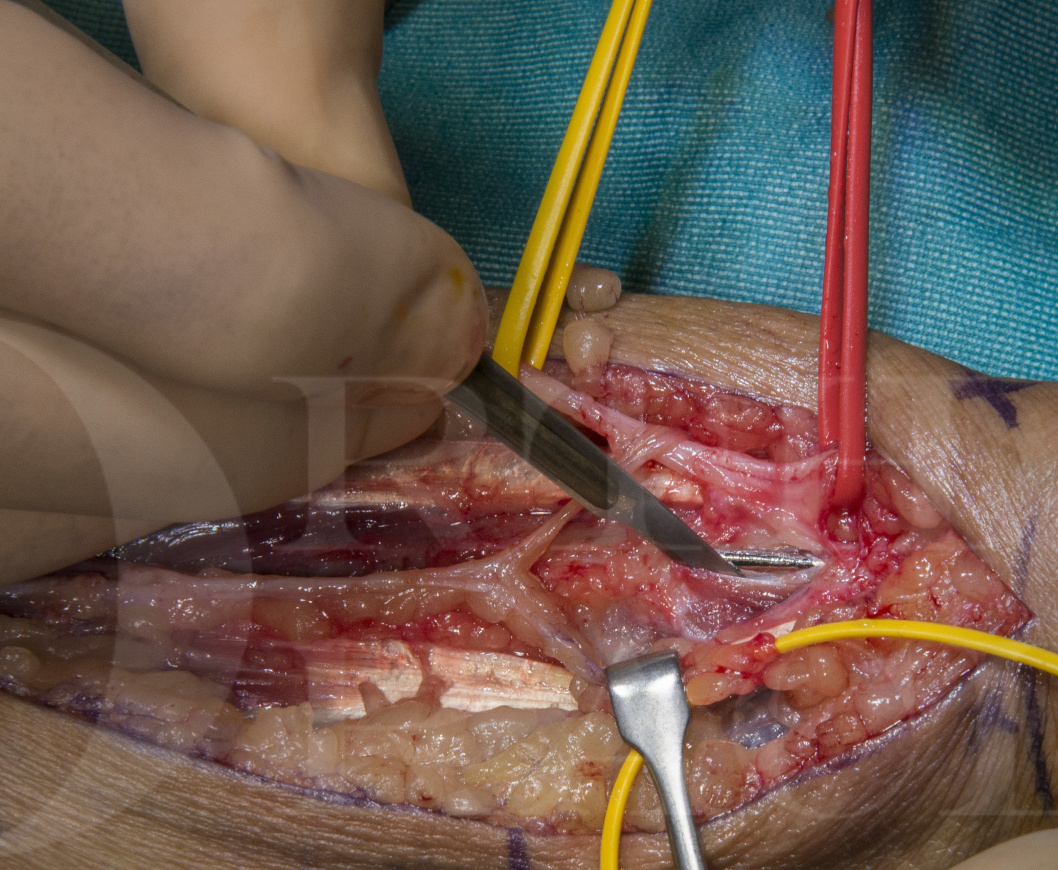Exploration of radial nerve and lateral cutaneous nerve of forearm and DCP implant removal
Overview

Subscribe to get full access to this operation and the extensive Upper Limb & Hand Surgery Atlas.
Learn the Exploration of radial nerve and lateral cutaneous nerve of forearm and DCP implant removal surgical technique with step by step instructions on OrthOracle. Our e-learning platform contains high resolution images and a certified CME of the Exploration of radial nerve and lateral cutaneous nerve of forearm and DCP implant removal surgical procedure.
Any surgical procedure puts peripheral nerves at risk of injury. This may occur during the surgical approach, or by retractors and other instrumentation used during the procedure. Nerves may become entrapped or tethered around implants or in the surgical scar.
Patients typically present with signs and symptoms of nerve injury. Involvement of a sensory nerve, as in the following case, may be associated with pain, parasthaesia and reduced sensation. Left untreated, signs of chronicity may develop with central sensitisation and upregulation of pain pathways including psychological sequelae.
Early diagnosis and appropriate intervention in these patients can be rewarding.
The following technique describes my approach to the diagnosis and surgical management of a patient who was referred following injuries to the radial nerve and lateral cutaneous nerve of forearm during open reduction and internal fixation of the radius and ulna.
The decision about whether to proceed to surgical exploration should be made by a surgeon with experience in treating peripheral nerve disorders. It is largely based upon the history and clinical findings but may be aided by neurophysiology, radiology and physiotherapy. The use of targeted peripheral nerve blocks can be invaluable.
When exploring peripheral nerves in such a scenario, the peripheral nerve surgeon should be prepared for all eventualities, including the potential need to excise and graft a neuroma and in the use of adjuncts including nerve allograft and nerve wraps.
Readers will also find of interest the following published techniques on OrthOracle, which explain some of the additional techniques referred to in this section.
These include:
1. The use of a nerve wrap
2. The use of processed nerve allograft
3. Reconstruction with autologous nerve graft
Author: Tahseen Chaudhry, FRCS Orth, Consultant in hand and peripheral nerve surgery
Institution: University Hospital Birmingham, Birmingham, UK.
Clinicians should seek clarification on whether any implant demonstrated is licensed for use in their own country.
In the USA contact: fda.gov
In the UK contact: gov.uk
In the EU contact: ema.europa.eu
Online learning is only available to subscribers.



















